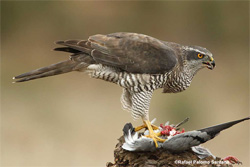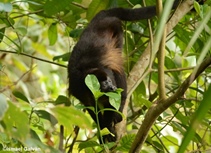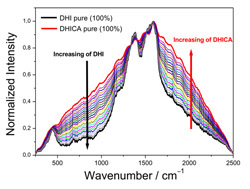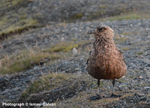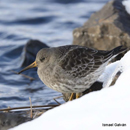The accumulation of the amino acid cysteine in lysosomes produces toxic substances, which are avoided by a gene (CTNS) coding for a transporter that pumps cystine out of lysosomes. Melanosomes are lysosome-related organelles that synthesize melanins, the most widespread pigments in animals. The synthesis of the orange melanin, termed pheomelanin, depends on cysteine levels because the sulfhydryl group is used to form the pigment. Pheomelanin synthesis may, therefore, be affected by cysteine homeostasis, although this has never been explored in a natural system. As diet is an important source of cysteine, here such an effect was indirectly tested by searching for an association between food abundance and pheomelanin content of feathers in a wild population of Northern goshawk Accipiter gentilis. As predicted on the basis that CTNS expression may inhibit pheomelanin synthesis and increase with food abundance -as previously found in other strictly carnivorous birds- the feather pheomelanin content in nestling goshawks, but not in adults, decreased as the abundance of prey available to them increased. In contrast, variation in the feather content of the non-sulphurated melanin form (eumelanin) was only explained by sex in both nestlings and adults. The feather pheomelanin content of nestlings was also found negatively related to that of their mothers, suggesting a relevant environmental influence on pheomelanin synthesis. Overall, these findings suggest that variation in pheomelanin synthesis may be a side effect of the maintenance of cysteine homeostasis. This may help explaining variability in the expression of pigmented phenotypes. informacion[at]ebd.csic.es: Galván et al (2019) Pheomelanin synthesis varies with protein food abundance in developing goshawks. J Comp Physiol B https://doi.org/10.1007/s00360-019-01222-y
https://link.springer.com/article/10.1007/s00360-019-01222-y

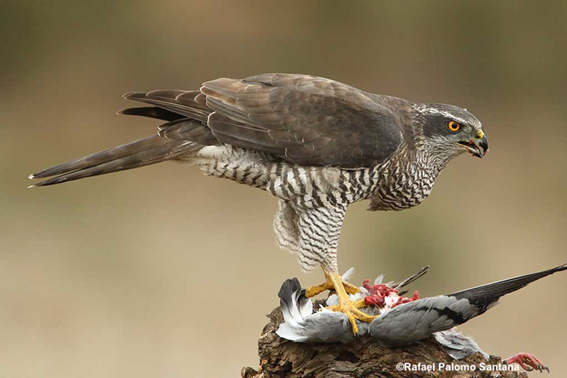
 Pheomelanin synthesis varies with protein food abundance in developing goshawks
Pheomelanin synthesis varies with protein food abundance in developing goshawks